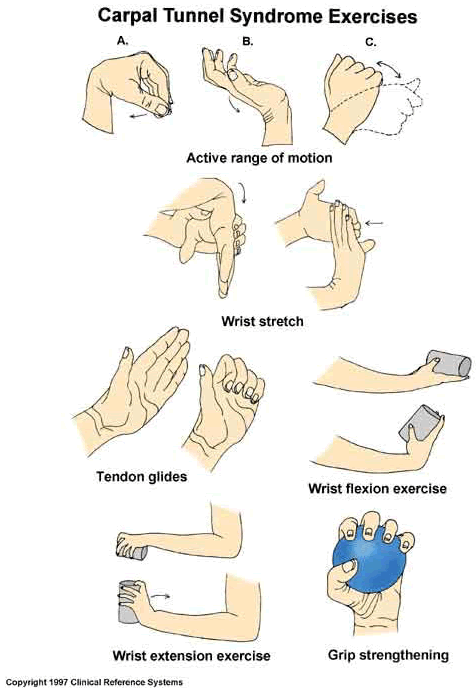
I think at some point we have all had to put down our WIP (work in progress) to give our hands a rest. For some crafters the pain is frequent, the pain is intense, and the pain is usually diagnosed as Carpel Tunnel Syndrome.
Carpal Tunnel Syndrome (CTS) is a common ailment among crafters and people who use their hands frequently for work. It is caused by the compression of the median nerve, which runs from the forearm into the hand through a narrow passageway called the carpal tunnel. The symptoms of CTS include numbness, pain, and tingling in the hand, forearm, and wrist, as well as stiffness in the fingers.
One way to prevent CTS is to use compression support gloves, which help to reduce swelling and inflammation in the hands and wrists. These gloves can also improve blood circulation, which can help to reduce pain and discomfort.
But have you ever thought about how to avoid it?
Firstly do you have Carpel Tunnel Syndrome? ( seek medical advice always before self-diagnosis)
Symptoms include:
- Numbness or pain in your hand, forearm, or wrist that awakens you at night. (Shaking or moving your fingers may ease this numbness and pain.)
- Occasional tingling, numbness, “pins-and-needles” sensation, or pain. The feeling is similar to your hand “falling asleep.”
- Numbness or pain that gets worse while you are using your hand or wrist. You are most likely to feel it when you grip an object with your hand or bend (flex) your wrist.
- Occasional aching pain in your forearm between your elbow and wrist.
- Stiffness in your fingers when you get up in the morning. (source)
Things you can do to avoid the pain.
Use Compression support gloves
Exercise your hands. Make sure you stretch your fingers, arms and your wrists before you begin.
No slouching – If you are a true addict you will probably want to crochet or knit anywhere you can, but is your posture right? We all know the rules for sitting at a computer desk but did you know those apply to crafting too. Make sure you are sitting straight with support for your lower back and a cushion under your arms if you need the extra support. Your feet should be flat on the ground at all times.
Take a stretching break – I know it’s probably only a few more rows until you are finished but your HAVE to get up and move. Take a toilet break or a tea break and go back to the first step of stretching your hands around.
Is it too late for you? Is the damage done? then you might like to try these techniques for eliminating Carpel Tunnel Pain.
Need Crochet supplies and Yarn? We highly recommend Lionbrand for quality yarn and ongoing yarn sales and discounts. Make sure to check out their free crochet patterns too.

Crochet and knitting are two of the most popular and beloved crafts in the world, but they can also be the source of pain and discomfort. As someone who has been crocheting and knitting for years, I know firsthand how easy it is to develop pain and discomfort in your hands, wrists, and shoulders. But, with a few simple tips and tricks, you can avoid crochet and knitting pain and continue to enjoy your craft for years to come.
The first and most important thing to keep in mind is to maintain proper posture. Sitting in a chair that supports your back and having your feet flat on the floor will help to keep your shoulders and neck relaxed. It’s also important to take frequent breaks, and to stretch your hands, wrists, and shoulders before and after you crochet or knit. This will help to prevent stiffness and cramping, and will also increase circulation to your hands and fingers.
Another important tip is to use the right tools for the job. Investing in a comfortable crochet hook or knitting needle, with the right size and shape for your hand, can make a big difference in reducing pain and discomfort. Ergonomic hooks and needles are designed to reduce strain on your hands and fingers and are a great option to consider.
Consider the yarn you are using, too. Yarns that are too heavy or too rough can be hard on your hands and fingers, so it’s important to choose a yarn that is comfortable to work with. Consider using a yarn that is soft and easy to work with, such as cotton or bamboo. These yarns are gentle on your hands, and also have a softer texture than other fibers.
Finally, it’s important to pay attention to any pain or discomfort you may be experiencing while crocheting or knitting. If you notice any pain, take a break and rest your hands. If the pain persists, it may be a good idea to consult a doctor or a physical therapist to help you to manage the pain and to find ways to prevent it from happening in the future.
Crochet and knitting are wonderful crafts that can bring joy and relaxation to our lives, but they can also be a source of pain and discomfort. By maintaining proper posture, taking frequent breaks, using the right tools, choosing the right yarn, and paying attention to any pain or discomfort, you can avoid crochet and knitting pain and continue to enjoy your craft for years to come.




Leave a Reply